You are here to find out which heaters are most efficient and we are here to present you most efficient heaters on the market.
However, before we list all of the products, let’s quickly take a look at some factors that you need to look at before choosing the right space heater for your home.
📍 Note: You can read the whole article below, or if you prefer to watch, we have a whole video reviewing the most efficient space heaters.
What To Consider Before Buying a Space Heater
- Space: Determine where the heater will be placed and measure that room. This will help you streamline your selection based on device size and heating capacity or coverage.
- Safety: Choose heaters that are approved by authorized entities like the Underwriters Laboratory and the Electrical Testing Laboratories. Look for units with safety features such as an overload shut-off sensor and tip-over switch.
- Noise Level: Go for machines that can operate quietly, especially if you’re getting a heater for your bedroom or your home office.
- Efficiency: This is why you are here for! If you want to avoid spending too much on heating, carefully gauge a product’s energy efficiency before buying it. Find space heaters that distribute hot air quickly and evenly. Heaters with timers, programming capabilities, and handy thermostats can allow you to manage your heater’s energy expenditure.
🔥 Most Energy-Efficient Space Heater: Dr. Infrared Heater
- Wattage: 1,500 watts
- Estimated Cost per Hour: $0.23 (based on the current daily average electricity rate in the US for residential homes, which is $0.1546/kWh)
- Room Heating Size: 1,000 sq. ft.
This is one of the best-selling space heaters on the market and it’s not a coincidence.
This Dr.Infrared model is everything you need for a warm and cozy winter – no matter how large (or small) the area you’re looking to heat.
It’s by far the most energy-efficient heater because of an auto-energy saving model feature that saves energy even on the highest power settings.
What’s most impressive is the dual heating system which can never overheat due to the 12-hour automatic shutoff.
You won’t need to stand up to change the temperature – you can control everything from the remote control you receive (free of charge).
Although this heater is very powerful, it’s super quiet with only a 39 dB noise level – this is compared to library noise.
It has an adjustable thermostat and you can easily move it from one room to another due to built-in wheels.
All in all, this is the best space heater you can find nowadays.
Best Alternative: Presto Heat Dish
- Wattage: 1,000 watts
- Estimated Cost per Hour: $0.15 (calculate the exact cost for your home with our calculator at the end of this article)
- Room Heating Size: 200 sq. ft.
Built with a ceramic cone with coiled wiring that powers the heat from this device, the Presto Heat Dish is a directional heater that emits hot air toward the occupants of a room.
This heater, which is no bigger than a mid-sized desk fan, has three heat settings: low, medium, and high. It generates three times the heat produced by 1,500-watt heaters, although its actual consumption is only 1,000 watts.
This 3.7-pound appliance bears an Underwriters Laboratory (UL) certification. It’s equipped with a warning sound that buzzes and a safety switch that is programmed to turn off if the machine tips over. It also automatically shuts down when it overheats.
The Presto Heat Dish can be plugged into a standard 120-volt outlet and has a built-in cord wrap at the back. It’s best for heating small spaces.
Several users love the heater’s portability. They do wish, however, that the head of the heater could turn, just like a regular fan. Some are also bothered by the clicking sounds they hear or the “flash of light” they see whenever they raise the heater’s temperature setting.
👉 Looking for more details on this heater? We have a full in-depth review on Presto Heat Dish.
Advanced Tower Heater: De’Longhi Ceramic Tower Heater
- Wattage: 1,500 watts
- Estimated Cost per Hour: $0.23 (calculate the exact cost for your home with our calculator at the end of this article)
- Room Heating Size: 150 sq. ft.
First of all, I have to note that this heater is powerful and it has 5120 BTUs of power.
What’s most impressive about the DeLonghi heater is that the ECO function automatically adjusts the heat based on the room’s temperature and saves you a lot of money on electricity bills – while still heating the room efficiently.
It’s very safe, so you won’t have to worry about overheating. It also has a tip-over switch which automatically shuts off the heater if it falls.
You receive a remote control from which you can set up everything – temperature, airflow output, timer, etc.
While this heater is powerful, I would recommend it for middle or smaller rooms (up to 150 sq. ft.).
The design is modern with an LCD that looks brilliant.
Budget-Friendly: Honeywell HHF360V
- Wattage: 1,500 watts
- Estimated Cost per Hour: $0.23 (calculate the exact cost for your home with our calculator at the end of this article)
- Room Heating Size: 700 sq. ft.
If you’re on a tight budget and looking to get the best bang for the buck – this model is perfect for you.
It’s one of the rare heaters that provide 360° all-around heating to heat the whole room quicker.
What’s impressive considering the price point, is that it has an adjustable thermostat and 2 heat settings.
A lot of people are asking about the safety of smaller heaters like this one, but this model has 2x overheat protection and a tip-over switch. No matter on which side the heater falls, it will automatically shut off to prevent the risk of fire.
Honestly, I would recommend this heater for smaller rooms only. If you try to use it inside a bigger room, make sure it’s pushing warm air near you.
Smart Heater With Advanced Features: Atomi Smart WiFi
- Wattage: 1,500 watts
- Estimated Cost per Hour: $0.23 (calculate the exact cost for your home with our calculator at the end of this article)
- Room Heating Size: 750 sq. ft.
If you’re someone who likes advanced and smart gadgets – you’ll fall in love with this heater.
Atomi Smart heater is by far the smartest heater on the market, it has everything you need.
You can easily connect your smartphone and control everything from there, or simply use voice commands with Alexa or Google Assistant.
It has the most improved tip-over switch system – you receive a phone notification if the heater tips over.
What I love about it is that the built-in handle will never get too hot – you can move it from one room to another even if you use it for a whole day.
If you decide you want to disconnect your phone, you can still control everything through a large screen panel that works on your touch.
Talking about the power, you can easily warm rooms up to 750 sq. ft.
It has whisper-quiet technology, 3 different heat settings, an oscillation feature, and many more smart and advanced features.
Best Design & Style: SANVINDER 1500W
- Wattage: 1,500 watts
- Estimated Cost per Hour: $0.23 (calculate the exact cost for your home with our calculator at the end of this article)
- Room Heating Size: –
You might be looking for something that will add to your home’s design – this heater doesn’t look like your regular space heater.
With 1500W power PTC ceramic heating, this heater will heat your room within 5 minutes.
What I love the most about this model is how you can easily switch every temperature by just rotating the button on the side of the heater.
You can set your desired temperature and once that temperature is reached, this heater will slowly heat the room to precisely maintain the same temperature.
You can use fan-only mode which is usually suitable for warmer days (once when spring arrives).
It has 90° oscillation, so heating all parts of your room isn’t a problem.
It’s very safe and it has multiple safety features that prevent any risk of fire or further damage.
There is also a smaller version of this heater, having only 950 watts of power.
Best Oil-Filled Heater: COSTWAY Radiator
- Wattage: 700 watts
- Estimated Cost per Hour: $0.23 (calculate the exact cost for your home with our calculator at the end of this article)
- Room Heating Size: Variable (some say 100 sq. ft., others 400 sq ft)
This oil-filled heater looks like your old-style radiator heater, but the oil inside it is permanently sealed so you won’t need to worry about refills or leaks.
It features an adjustable thermostat dial and, like the products listed above, an anti-overheating auto-shutoff feature.
The 8.6-pound heater has a front-carry handle, which makes it easy to move around. Meanwhile, its wide “feet” provide stability for the accordion-like machine.
Since it’s not fan-operated, it’s very quiet, which some customers like. They also praise how the machine prevents air from becoming humid, making it ideal for buyers who have sinus problems. However, users lament that the product lacks a timer and a digital temperature display.
With 3D Flame Effect: Duraflame 3D Infrared
- Wattage: 1,525 watts
- Estimated Cost per Hour: $0.23 (calculate the exact cost for your home with our calculator at the end of this article)
- Room Heating Size: 1,000 sq. ft.
This Duraflame3D’s antique design can add a rustic charm to your living room. Its infrared heat can generate warmth while maintaining the room’s natural humidity. You can easily adjust the temperature using its remote-controlled thermostat. It also has an auto shut-off feature that protects the product from overheating.
The heater is made of solid metal, while its door is beveled glass, which helps enhance the product’s highly realistic 3D flame effects. You can still enjoy the heater’s flame effects, which have five brightness settings, even without turning the heater on.
For customers, the only thing that the heater is missing to match a real fireplace is the “crackling sound” from the latter.
Some buyers have shared that the electric fireplace is noisy and that it takes a while to heat rooms, which can be typical of radiant devices.
Best Box-Type Space Heater: AirNmore Comfort Deluxe
- Wattage: 1,000 or 1,500 watts (two different modes)
- Estimated Cost per Hour: from $0.15 to $0.23 (calculate the exact cost for your home with our calculator at the end of this article)
- Room Heating Size: 1,000 sq. ft.
The AirNmore heater is powered by a copper PTC (positive temperature coefficient) heating element, instead of bulbs and traditional coils, resulting in lower maintenance costs. It also has a cleanable, heavy-duty filter that prevents dust and small particles from entering and bogging down the device.
The remote-controlled heater, which is ETL-listed, has a tip-over switch and a “self-limiting” feature that keeps it from overheating. It has an auto-reboot memory that allows the heater to revert to your last temperature settings in case it shuts off due to a power outage.
Because the product comes with casters or wheels, you can easily move it between rooms. It also comes with a five-foot-long, 14-gauge power cord.
Some users, however, have complained about the heater’s noise and how it lacks the power to heat even just a 300-square-foot room.
Best Ceramic Space Heater: Comfort Zone
- Wattage: 1,500 watts
- Estimated Cost per Hour: $0.23 (calculate the exact cost for your home with our calculator at the end of this article)
- Room Heating Size: 300 sq. ft.
This sleek, tower-type ETL-certified heater by Comfort Zone has an oscillating fan that can rotate for up to 70 degrees, warming your space fast and evenly. It has an adjustable thermostat and an LED display. It has three heat settings: low (800 watts), medium (1,000 watts), and high (1,500 watts).
Its ceramic build, eight-hour timer, and “eco” mode control the product’s heat output and help keep energy costs minimal. It also shuts off automatically when it tips over or overheats.
Customers are impressed with the product’s “eco” mode, a setting that lowers the heat from the device when the air inside a room reaches the temperature you select. However, some buyers have reported that their heaters “melted” when they overheated or burned wall plugs.
📚 Recommended reading: Ceramic vs Radiant Heater [Which One’s Better & WHY]
Best Heater for Small Spaces: Honeywell UberHeat
- Wattage: 1,500 watts
- Estimated Cost per Hour: $0.23 (calculate the exact cost for your home with our calculator at the end of this article)
- Room Heating Size: Variable (one site says 150 sq. ft., another says 300 sq. ft.)
The Honeywell heater, with its round head and legs, looks like an alarm clock and is just as small as one too. It features a plastic, cool-touch, heat-tolerant housing, non-slip rubber feet, and a wire kickstand.
You can choose between low (personal heating) and maximum (whole room) heat using the rocker switch on top of the heater. Below is a dial for thermostat adjustment.
The unit’s auto shut-off function kicks in when it tips over, overheats, or reaches a targeted temperature. It also comes with a six-foot-long cord.
Customers are impressed by this powerful compact heater. It can, surprisingly, adequately heat a room with a floor area of 12 x 17 feet. However, some users have complained about its noisy fan and its short product life (two to six months).
Best Space-Saving Heater: Convectair Allegro II 18
- Wattage: 2,000 watts
- Estimated Cost per Hour: $0.31 (calculate the exact cost for your home with our calculator at the end of this article)
- Room Heating Size: 400 sq. ft.
This heater features surface-treated aluminum alloy for optimal heat transfer.
It also has a thermal sensor, which detects cold air, at the bottom, and an ultra-sensitive thermostat, which allows you to turn up the heat to accurate levels. Its digital controls are found beneath a lockable safety lid so you can keep it from children’s reach.
With its wall-mount design, you won’t need to provide space between the device and the wall to ensure proper airflow. It’s installed at least 4 inches from the base of a wall.
Users mostly praise the machine for its clean look and quiet performance, but a few customers have noted that it’s not compatible with app-based thermostats like Nest and Ecobee.
How Do Space Heaters Work?
Space heaters produce heat in different ways, but their energy production usually follows three stages:
- Generation: Heat is produced through the burning of oil and fossil fuel, or, in electric devices, current passes through coils and other conductors of energy. Heaters consume the “fuel”—whether gas, fuel oil, or electricity—that powers them.
- Distribution: Heaters distribute heat either through the use of small fans or through the convection process. In the latter, the oil or water surrounding the heating element is heated first before heat warms the ambient air. Heating systems operate based on the principle that heat transfers from a warm object to a cooler one.
- Control: Features such as thermostats and timers serve as heat control, regulating the amount and duration of warmth that heaters produce in a room.
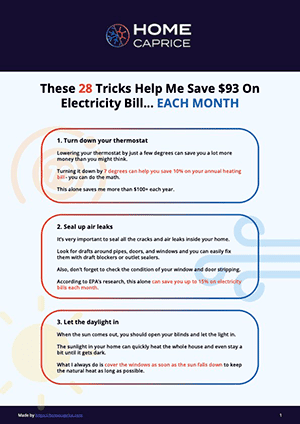
Download this FREE cheat sheet to find 28 tricks that can help you save on your electricity and heating bill each month.
Click here to get a FREE Cheat-SheetHow to Calculate the Efficiency of Space Heaters?
You can use the formulas below to ensure that the heater you’ll choose has enough wattage or BTUs to warm the area where it will be used.
First, determine your room’s surface area by using this formula:
length (feet) x width (feet) = area (square feet)
a) If your room has a ceiling with a “regular height” (up to 8 feet high): calculate the kilowatt-hour you need by multiplying the room area by 10. You’ll need 10 watts per square foot of floor area for this type of room.
Ex. 132 sq. feet x 10 = 1,320 watts or 1.32kW for every hour of heating.
b) If your room has a ceiling higher than 8 feet: multiply the surface area by the ceiling height, then by 1.25. Each cubic foot needs 1.25 watts.
Ex. 132 sq. feet x 9 feet (ceiling height) x 1.25 = 1,485 watts or 1.48kW for every hour of heating.
Additionally, you can convert the calculated wattage to British Thermal Units (BTUs) by multiplying the number of watts by 3.41. Examples below:
a) Ceiling up to 8 feet high: 1,320 watts x 3.41 = 4,501.2 BTUs
b) The ceiling of 9 feet high 1,485 watts x 3.41 = 5,063.85 BTUs
How to Choose the Most Energy-Efficient Space Heater?
Consider these factors when buying a space heater:
- Heat Capacity: Choose a space heater with a wattage that matches the size of the room where it will be used.
- Heat Distribution: Look for heaters that can warm the room quickly and evenly.
- Programming Capabilities: Select a heater with a programmable thermostat that cycles on and off upon reaching your desired temperature. A heater with multiple heat settings is also a good alternative.
- “Eco” and “Auto” Mode: These preset programs mechanically raise or lower the temperature level (or, in some devices, turn the heater off) depending on your selected heat setting.
- Timer: This can help you automatically limit the length of time the heater will be used.
- Auto-kill Switch: It’s important to get a heater that shuts itself off once it gets too hot or accidentally gets knocked over.
- Type of Heater: Petroleum-based space heaters are considered the most energy-efficient because the fuel burns entirely and most of it turns to heat. However, since they produce smoke, these heaters need to be linked directly to an exhaust vent.
📍 Note: Electricity-based space heaters are not as energy-efficient as petroleum-run ones, but they are smoke-free and can be used in enclosed rooms.
How to Calculate Heating Cost?
To estimate how much your electric heater will cost you monthly, multiply the following together:
- Electricity charge per kilowatt-hour (this varies from state to state)
- The average number of hours the heater will be used per day
- Maximum wattage of the heater, divided by 1,000
- Number of days in a month
Ex. $0.28 per kilowatt-hour (the rate in California) x 8 hours x (1,500 watts per hour / 1,000) = $2.24 per day or $67.20 per month.
You can also use this calculator below:
How to Use Your Space Heater Efficiently?
- Unless your space heater is wall-mounted, leave at least a one-foot gap between your heater and the wall because its air intake and output areas must be clear of obstruction. It should also be kept three feet away from anything flammable, such as paper, rugs, and clothing.
- Check its air intake vents regularly and clean them whenever necessary. Don’t forget to unplug the heater when you clean it.
- Read the manual for the correct positioning, especially for directional or radiant heaters that are fan-operated.
- Set your thermostat to the Department of Energy’s recommended 68 degrees Fahrenheit during daytime or when you’re awake. Lower it when you’re about to sleep.
- Insulate rooms. Use curtains. Install double-glazed windows, if possible. Use weather stripping, caulk, and other sealants to cover cracks and small airways in windows and doors to prevent heat from escaping. Keep doors closed while your heater is on.


Download this FREE cheat sheet to find 28 tricks that can help you save on your electricity and heating bill each month.
Click here to get a FREE Cheat-Sheet






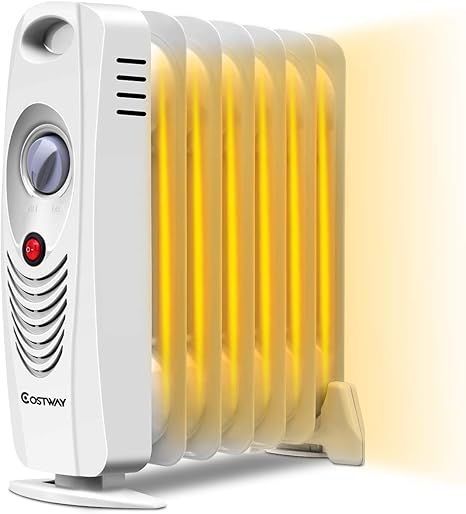

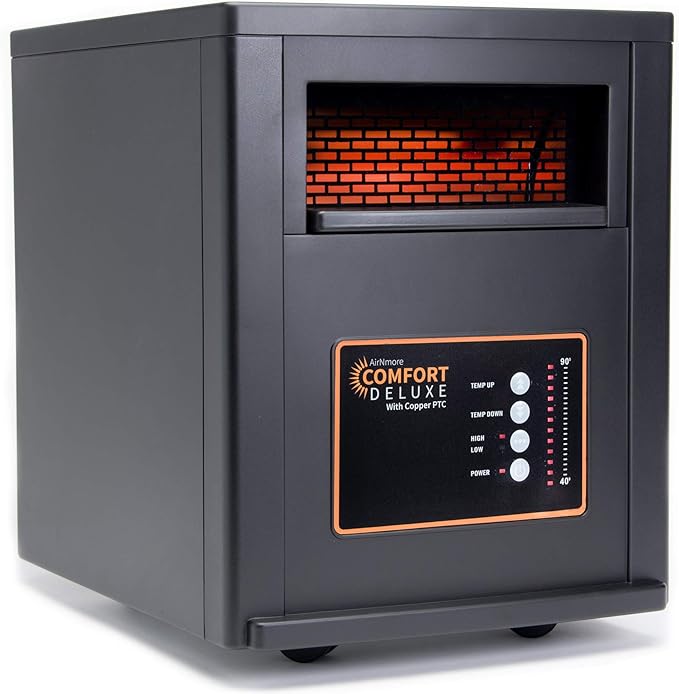
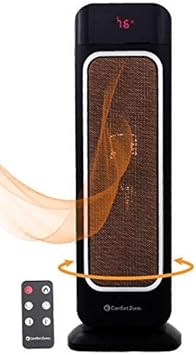
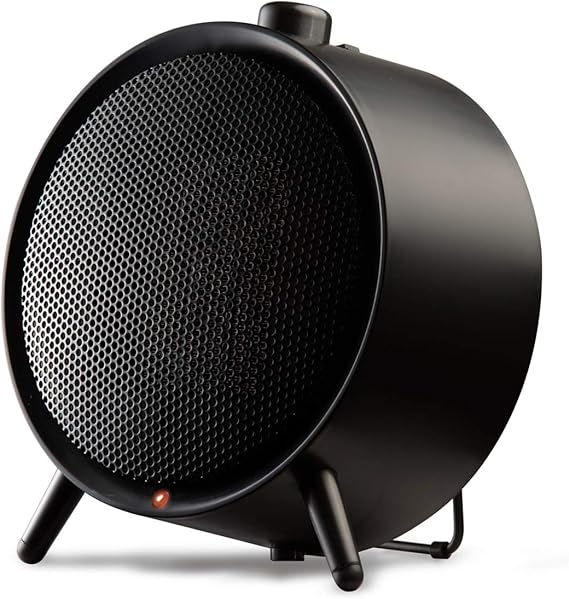
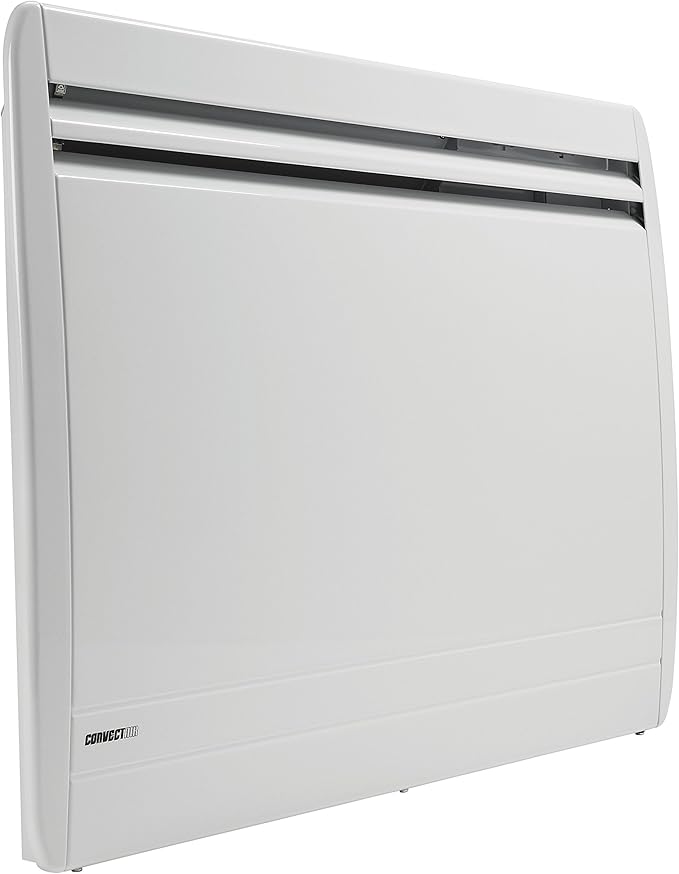

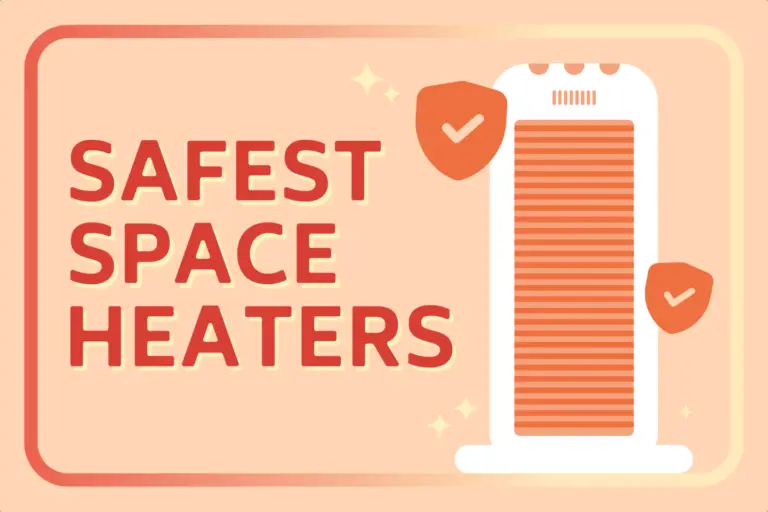
![5 Reasons Why Heat Storm Wi-Fi Heater Is Good Choice [Honest Review]](https://homecaprice.com/wp-content/uploads/2021/07/Heat-Storm-Wi-Fi-Heater-768x512.jpg)